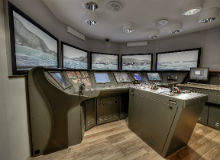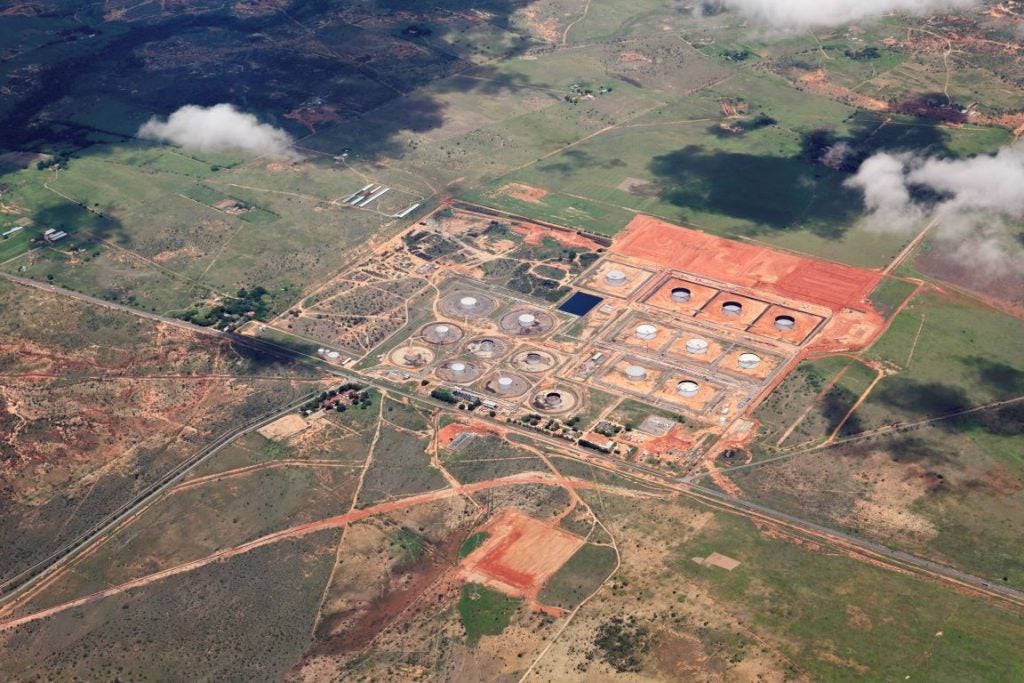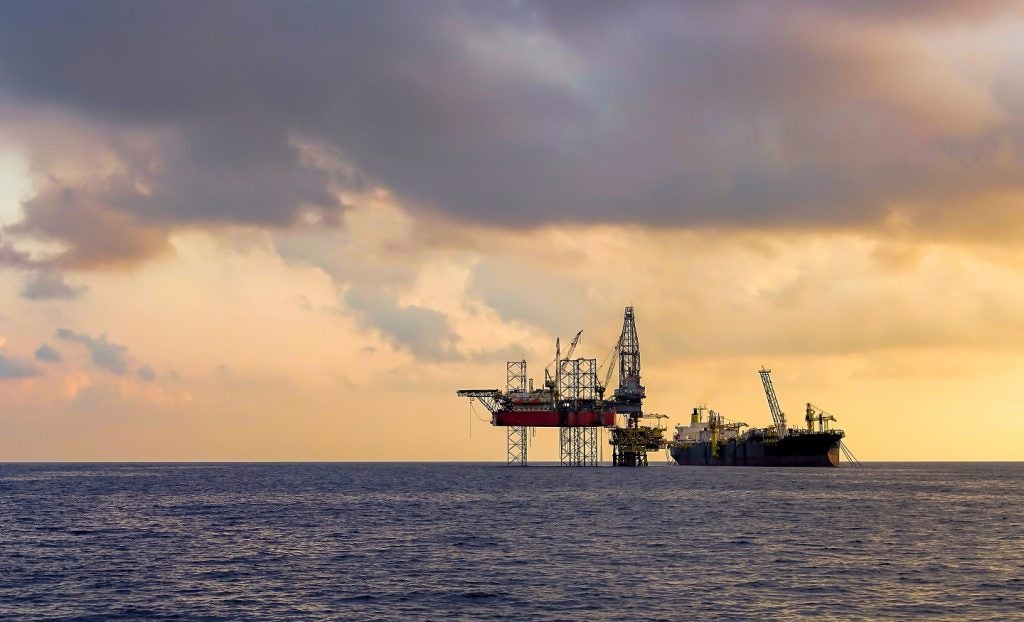

By offering life-like training for rapid-oil response for both onshore and offshore personnel, the simulator attempts to provide a platform to change the way in which oil spills are managed and rectified, decreasing the reaction time and improving safety procedures for personnel and the environment. We spoke to Johan Ekvall, product manager for navigational and offshore simulators at Transas, and Lars André Solberg, chief sales and marketing officer at Aptomar, to find out more.
Gary Peters: What makes this the world’s most advanced oil spill combating simulator?
Johan Ekvall: I would say the correct physical modelling of the oil, the response equipment and the combating vessels, making it possible for vessel operators to actually collect the oil using booms, busters and oil skimmers.
The response equipment is modelled in accordance with the manufacturer data, which means that it will collect oil as long as you don’t cross the speed limit at the actual sea state. The oil distribution and flow is carefully modelled and its visual appearance is dependent on the amount of spilled oil.
Lars André Solberg: This simulator is the only one in the world combining "all" parts of an offshore clean up operation; remote sensing and monitoring of oil, navigation of vessels, manoeuvring clean up tools (booms, skimmers etc), information sharing and collaboration between vessels and onshore operations. Most simulators have just the vessel navigation and potentially manoeuvring with a boom attached.
See Also:
GP: What benefits does the simulator hope to provide?
JE: It will hopefully be a good tool to decrease the reaction time when an oil spill occurs. This is done by accurate vessel and equipment handling, good communication and unified procedures.
How well do you really know your competitors?
Access the most comprehensive Company Profiles on the market, powered by GlobalData. Save hours of research. Gain competitive edge.

Thank you!
Your download email will arrive shortly
Not ready to buy yet? Download a free sample
We are confident about the unique quality of our Company Profiles. However, we want you to make the most beneficial decision for your business, so we offer a free sample that you can download by submitting the below form
By GlobalDataLAS: To improve safety for personnel, the environment and offshore values, training is the key to any well-managed operation. The closer you get to a life-like environment, the more life-like you will train, and the better you will perform during a real incident. A simulator is the step before the real world, as it looks and feels 99% like the real thing.
A new breed of investor is seeking to force climate change into the boardrooms of big oil.
The advantage with the simulator will be that you can create any situation in regards to the type of spills, involved vessels, weather, locations, etc, and you are able to run through a specific scenario.
If you ‘fail’ or want to improve your performance, you play back and start all over again … something you cannot do in the real world. The simulator will train both the offshore and onshore crew in tactical oil spill management, involving remote sensing, information sharing, tactical collaboration and strategic use of all involved tools and resources. [The] end game is to give the users the know-how to combat more oil, faster, at a lower price.
GP: How important are developments such as this to the offshore industry and its employees?
JE: I do think it’s very important, especially when coming from the industry itself. The Oil & Gas industry is a self-regulating industry, and if they want to stay that way they need to be proactive in safety and training. [An] oil spill in itself is very bad publicity but it’s ten times worse to be unprepared when it happens … and it will.
LAS: Training, exercising and building know-how is the key to improving work processes and drive the need and development of new solutions and technologies to safeguard people, the environment and the assets.
GP: What’s the reaction been to the simulator?
JE: The simulator has received a lot of positive response and is seen as a natural part of any simulator centre involved in the offshore training industry.
Of course, many of the commercial training centres need a financial plan behind their investments and the lack of firm requirements on this kind of training makes many of them hesitate. Hopefully we will see training requirements coming quite soon. As I mentioned before; if the industry wants to stay self-regulated, they need to be on top of questions like this.
LAS: The feedback has been very good. The industry, with both the emergency response personnel and the offshore crew, knows the challenge they will be facing during a real spill, and that training is the key to a well-managed operation.
As a spill rarely occurs, the only way to be prepared is to train, either doing theoretical office training courses or training in a life-like manner in a simulator. Many companies do frequent offshore exercises involving vessels and onshore crew, but an exercise is a tool to test your training and verify roles, responsibilities and communication. If you do not train, the exercise will be for nothing.
GP: What challenges did you encounter during the development of the simulator?
JE: The accurate modelling does mean heavy calculations, which need to be handled by the PC infrastructure. This is always a challenge when new technology is developed, but efficient coding and utilising other industries’ technology can overcome many challenges.
LAS: The challenges were few. The biggest job was to ensure that the system looks and feels like the real world, and to coordinate the development of the system and the integration and testing with the already installed Transas simulator.
GP: Could you talk me through the types of scenarios the simulator can be used for?
JE: The simulator is suitable for both coastal and offshore oil spill scenarios. There are different sizes of response equipment suitable for harbours, confined waters and open sea.
You can attach booms to shore, and the equipment can be handled, as traditionally, by two vessels or a single vessel using a boom/buster vane. So, you could simulate a disaster like Deepwater Horizon but also a minor spill in a smaller port.
Norway-based Aptomar has partnered with several key industry players as part of a new research project to improve oil spill management.
LAS: All types of offshore incidents, with collisions, fire, sinking oil platforms, spills from terminals etc, and all of them in different geographical locations with their land areas, currents [and] weather situations.
GP: How will the simulator change the way in which people train for possible oil spills?
JE: Up to now, much focus has been on the resource management level, with command control exercises. Vessel crews have been [on] standby, waiting for orders, waiting again and if they are lucky they have gone out to pick up popcorns, simulating the spilled oil, if the weather is suitable.
These exercises are often very expensive. By using the oil spill simulator, you can focus on the crew training in a controlled environment, knowing that the full scenario can be completed as it was planned. No surprises in weather [and] no problem with vessels or other equipment that could jeopardise the exercise objectives.
LAS: With the simulator you are able to train in the same environment, and with the same tools, as in a real life scenario. If you do not use the simulator, you do desktop exercises, or do an onshore training course in a classroom setting.
As mentioned earlier, when you do an exercise it is not training… it is testing out that the training has worked and that communication and roles are understood and operational.
GP: How user-friendly is the simulator? What assistance would a first-time user require?
JE: The trainee will receive a bridge familiarisation before the scenarios start, but the bridge equipment is the same type that they would expect to meet on a real vessel. This is a must so that the training centre can offer efficient training and also create acceptance among the trainees.
LAS: The simulator is just like the bridge on a vessel, so if you can manoeuvre a boat, you can use the simulator. The training is for professionals that have the roles and/or responsibilities in regards to oil spill combating.
Of course, if you took anyone from the street, they would struggle, but they would struggle just the same [as] if you put them on the bridge of a vessel.
GP: How easy is it to upgrade it if necessary?
JE: The simulator centre has an ongoing maintenance and upgrading contract, which keeps them [up to date] with top modern simulator software over time.
There is also a constant process between Transas, North Cape Simulators and their customers about improvements and new technologies, supporting the initiatives of a safer and cleaner industry.
LAS: The simulator is available online, so all future new software releases will be done remotely. The simulator centre will always have the latest version of the systems, so that the users will get the same look and feel in the simulator as [they would] in their own vessel.
GP: Lars, Aptomar’s tactical collaboration and management system (TCMS) is integrated with the simulator. What does this provide?
LAS: With the TCMS integrated into the simulator environment, we are able to simulate an emergency response operation from both onshore and offshore organisations’ view.
Here, the industry can bring both their offshore and onshore crew, having them train together, with their different roles, work processes and responsibilities. And, probably the most effective, have the onshore and offshore crew change roles during a simulation, giving the other "side" a better understanding of the challenges and strengths of the different locations.
If both sides know what the other needs, both will be able to adapt and deliver the needed support.


.gif)



